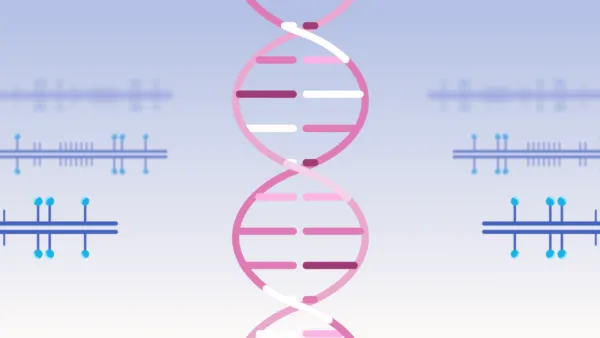TRICARE beneficiaries, please speak with your healthcare provider to request the Galleri test as a covered benefit. GRAIL's independent telemedicine provider is not currently authorized by TRICARE for Galleri test requests.
Take control when it comes to cancer. The Galleri test helps you be proactive about your health.1
The Galleri test does not detect a signal for all cancers and not all cancers can be detected in the blood. False positive and false negative results do occur. The Galleri test should be used in addition to cancer screening tests your healthcare provider recommends. Galleri is by prescription only.

The Galleri test does not detect a signal for all cancers and not all cancers can be detected in the blood. False positive and false negative results do occur. The Galleri test should be used in addition to cancer screening tests your healthcare provider recommends. Galleri is by prescription only.
Galleri is a screening test that looks for cancer before symptoms appear4, when cancer may be easier to treat. It is important to get cancer screenings even if you feel fine.
Twelve of the deadliest cancers* are responsible for two-thirds of cancer deaths.1,6 These cancers tend to release more DNA fragments into the bloodstream at early stages.1
The Galleri test screens for many of these deadly cancers that have no recommended screening tests.4
*Anus, bladder, colon/rectum, esophagus, head and neck, liver/bile duct, lung, lymphoma, ovary, pancreas, plasma cell neoplasm, and stomach.
The Galleri test sensitivity for these cancers varies across cancer types and stages.

Cancers growing in the body shed DNA into the bloodstream.1,2,3 Although there are many types of cancer, the DNA fragments can act like a unique “fingerprint” of cancer. This Galleri test screens for many of the deadliest cancers before they become symptomatic,4 including many without recommended screening tests.1,5 The Galleri test results provide direction to your healthcare provider and help guide the next steps for diagnosis.4
Galleri is a screening test and does not diagnose cancer. Diagnostic testing is needed to confirm cancer.

The Galleri test is available by prescription only and must be ordered by a healthcare provider. You can request the test through your healthcare provider or online through an independent telemedicine provider.
At your next wellness visit, ask your healthcare provider about Galleri. Our discussion guide can help start the conversation.
TRICARE beneficiaries download an ordering guide here.
You can also request the Galleri test online through an independent telemedicine provider.
*Discounts on the Galleri test may be available on Galleri.com, through healthcare providers, employers, or life insurance carriers.
You will receive your test result about two weeks after your blood sample is received at the GRAIL lab.
There are two possible results:
Nearly 99% of people who use the Galleri test, will screen negative — which is exactly what you want to hear.4 Continue with routine cancer screening tests your healthcare provider recommends.
If a cancer signal is found, results can predict the tissue type or organ associated with the cancer signal and help your healthcare provider guide the next steps.4
The Galleri test does not detect a signal for all cancers and not all cancers can be detected in the blood. False positive and false negative results do occur.

The Galleri test is recommended for use in adults with an elevated risk for cancer, such as those age 50 or older. The test does not detect all cancers and should be used in addition to routine cancer screening tests recommended by a healthcare provider. The Galleri test is intended to detect cancer signals and predict where in the body the cancer signal is located. Use of the test is not recommended in individuals who are pregnant, 21 years old or younger, or undergoing active cancer treatment.
Results should be interpreted by a healthcare provider in the context of medical history, clinical signs, and symptoms. A test result of No Cancer Signal Detected does not rule out cancer. A test result of Cancer Signal Detected requires confirmatory diagnostic evaluation by medically established procedures (e.g., imaging) to confirm cancer.
If cancer is not confirmed with further testing, it could mean that cancer is not present or testing was insufficient to detect cancer, including due to the cancer being located in a different part of the body. False positive (a cancer signal detected when cancer is not present) and false negative (a cancer signal not detected when cancer is present) test results do occur. Rx only.
The GRAIL clinical laboratory is certified under the Clinical Laboratory Improvement Amendments of 1988 (CLIA) and accredited by the College of American Pathologists. The Galleri test was developed — and its performance characteristics were determined — by GRAIL. The Galleri test has not been cleared or approved by the Food and Drug Administration. The GRAIL clinical laboratory is regulated under CLIA to perform high-complexity testing. The Galleri test is intended for clinical purposes